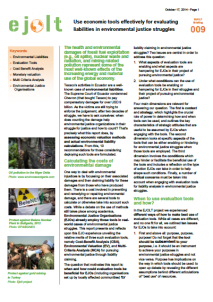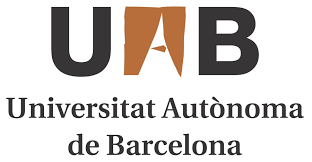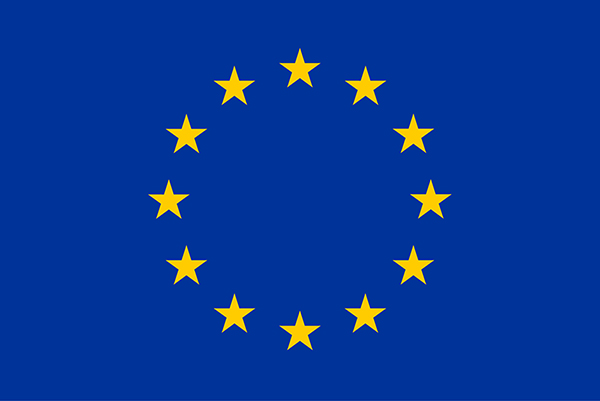
The health and environmental damages of fossil fuel exploitation (e.g., oil spills), nuclear waste and radiation, and mining-related pollution represent some of the most well-known effects of the increasing energy and material use of the global economy. Texaco’s activities in Ecuador are a well-known case of environmental liabilities. The Supreme Court of Ecuador condemned Chevron (that bought Texaco) to pay compensatory damages for over USD 9 billion. As the victims are still trying to enforce the judgement, after two decades of struggle, we have to ask ourselves: when does counting the damage help environmental justice organizations in their struggle for justice and how to count? That’s precisely what ejolt report 16 does, by assessing economic valuation methods and actual environmental liability calculations. In the EJOLT project we experienced different ways of how to make best use of evaluation tools. From this, 10 recommendations for those considering deploying such tools are formulated.
1. First and above all: purpose, purpose, purpose! Do not forget that the tool should be subservient to your purpose, i.e. it should be an instrument to achieve your purposes in environmental justice struggles and not vice versa. Purpose has implications on the way in which tools should be used: to open up debate by revealing the different assumptions behind different articulations of “best use” of resources.
Before engaging with the tool
2. Is “reason” relevant for taking decisions in your case of environmental struggle? Are policy-makers, communities, and other relevant actors and stakeholders likely to listen to the “voice of reason” that the evaluation tool will base its results and arguments?
3. Be strategic: ask yourself if the tool can help you move towards a more level playing field or if dedicating effort and resources to more conventional activity (e.g. organise a conference with experts, disseminate material, etc.) could serve this purpose better.
4. Engage also in less conflictive interaction with policy-makers during “peace times”. Use the opportunity not only to learn about future, potentially harmful developments but to also familiarise policy-makers with the tools and their contribution.
5. Consider the background conditions: are they mostly hindering (e.g. is there data availability) or facilitating (e.g. is it early in the process)?
6. The compensation issue (relevant mostly for CBA and EV): is there a danger that by developing the tool you help remove prevention of risk and damage and encourage damage compensation that weakens the role of environmental regulation? In short, could you be helping polluters to buy themselves out of environmental justice?
During the development of the tool
7. Prepare yourself to be questioned: ensure the credibility of results by collaborating with professionals whose
expertise and independence is not questionable and by using data whose validity is well established.
8. Develop the tool in such a way that it reveals the trade-offs and dilemmas of public decisions; avoid using the tool to provide a single, optimal choice – do not use the tool to oversimplify reality.
After developing the tool
9. Use the tool to engage with the media but also for building alliances with other groups active in broader justice struggles as well as possibly concerned policy-makers. Think of how you can make good use of the tool’s pedagogical potential, e.g. as a means to spread knowledge about environmental damage, risk and injustice.
10. Use tool results as a complementary instrument (e.g. pursue also public apology for liabilities) to put pressure for addressing environmental injustice. Do not use the tool as a single, all-encompassing pressure strategy, but maintain a number of “battlefronts” open, a portfolio of strategies to contest environmental injustice.
Read more in the 2 page EJOLT briefing on economic liabilities (.pdf)





Pingback: Quan comptar el dany?: Eines econòmiques per avaluar les responsabilitats en la lluita per la justícia ambiental / UAB | Lo Campus diari